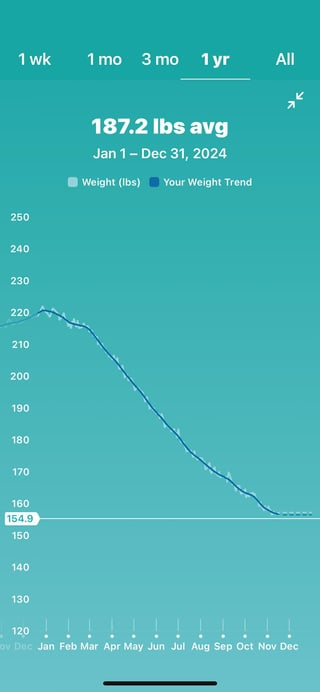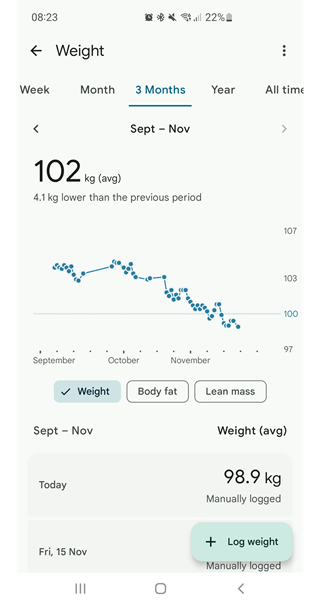Update 25/11/24: Turns out the weight trendline is accessible by tapping the 3-dots menu at the top > Manage data > Review data.
Original article follows:
Fitbit, once a gold standard for fitness tracking, has left users frustrated and baffled as a series of updates and redesigns have disrupted key features and introduced an avalanche of glitches. The app’s latest redesigns, especially the changes to the weight stats page, have sparked outrage among long-time users who relied on its clean, data-rich interface to track their progress.
One of the most glaring issues is the disappearance of the weight trendline, a visual tool that many users depended on to celebrate their progress or identify areas for improvement. In its place, Fitbit has introduced oversized data points and average weight displays that feel clunky and less insightful. Android users, particularly those with Pixel devices, have been hit hardest, with reports suggesting the issue is tied to the recent Android 15 update. Meanwhile, some iPhone users and others on older app versions still have access to the trendline, creating inconsistency and further confusion. Adding insult to injury, time-frame selectors for the weight graphs have been significantly scaled back, making it difficult for users to view their long-term progress.
This frustration extends to Fitbit’s food logging feature, which has become increasingly buggy since the updates. Users report issues with entering or editing past meals, making it nearly impossible to maintain accurate calorie logs. For those relying on the app for weight management, this is more than a minor inconvenience — it’s a disruption to their health journey. Fitbit support has acknowledged this glitch, but there’s still no word on when a fix will be available.
Previously, Pixel Watch users reported step count inaccuracies, with numbers resetting or failing to track properly. Calorie estimations and exercise tracking have also been plagued with errors, throwing fitness goals off course. To make matters worse, the ability to edit workout activities has been quietly removed in the latest update, leaving users with no way to correct auto-logged errors. Fitbit has compounded frustrations by warning users that failing to update the app could result in losing access to core features altogether, adding a sense of urgency to an already fraught situation.
Despite these missteps, Fitbit hasn’t entirely dropped the ball. Recent updates have brought a few positives, particularly for families. The Fitbit Ace LTE received new features like family communication tools and gamified quests, which have been warmly received. Similarly, the potential introduction of a sleep journal offers an innovative way to track long-term sleep patterns, though its supposed limited availability to certain devices and subscriptions has left some users disappointed.
The backlash to these changes has been fierce. Fitbit forums and social media platforms are brimming with users venting their frustrations and reminiscing about the simpler, more intuitive interfaces of the past. For many, the app’s former functionality was the cornerstone of their health routines, and the recent upheaval has them questioning Google’s priorities.
Fitbit’s path forward is uncertain. The company has alienated a significant portion of its loyal user base, and the combination of missing features, buggy performance, and unwelcome redesigns has created a perfect storm of dissatisfaction. As a Google-owned company, expectations for smart, user-friendly solutions are higher than ever. Yet, as users grapple with vanished trendlines, inaccurate food data, and removed features, Fitbit’s ability to walk the talk is being put to the test.
Tarr22-11-2024
BMI line has gone from weight graph also.
Vince19-11-2024
I agree, changes disconcerting. No trend for weight, no back data (lost?), no BMI displays....




